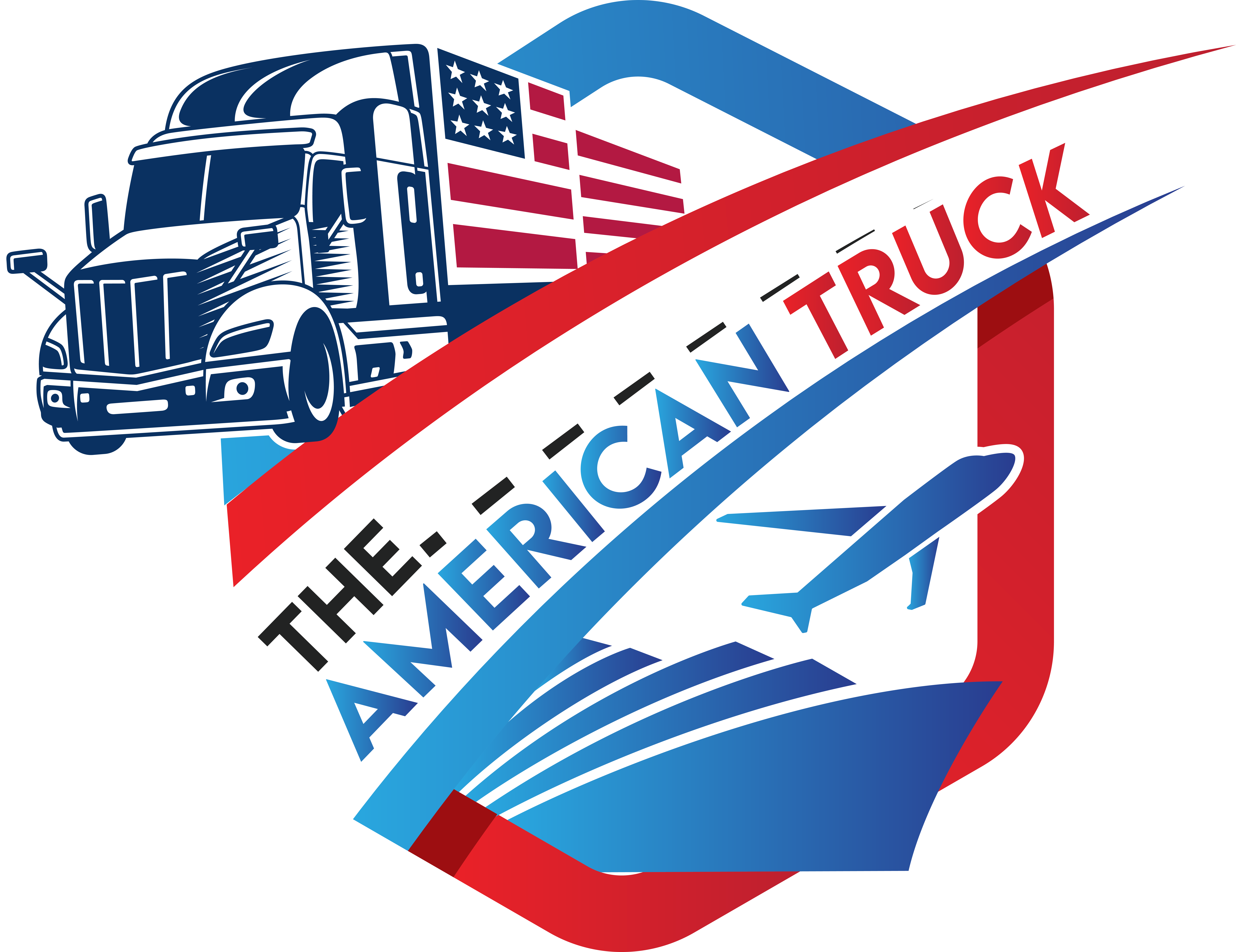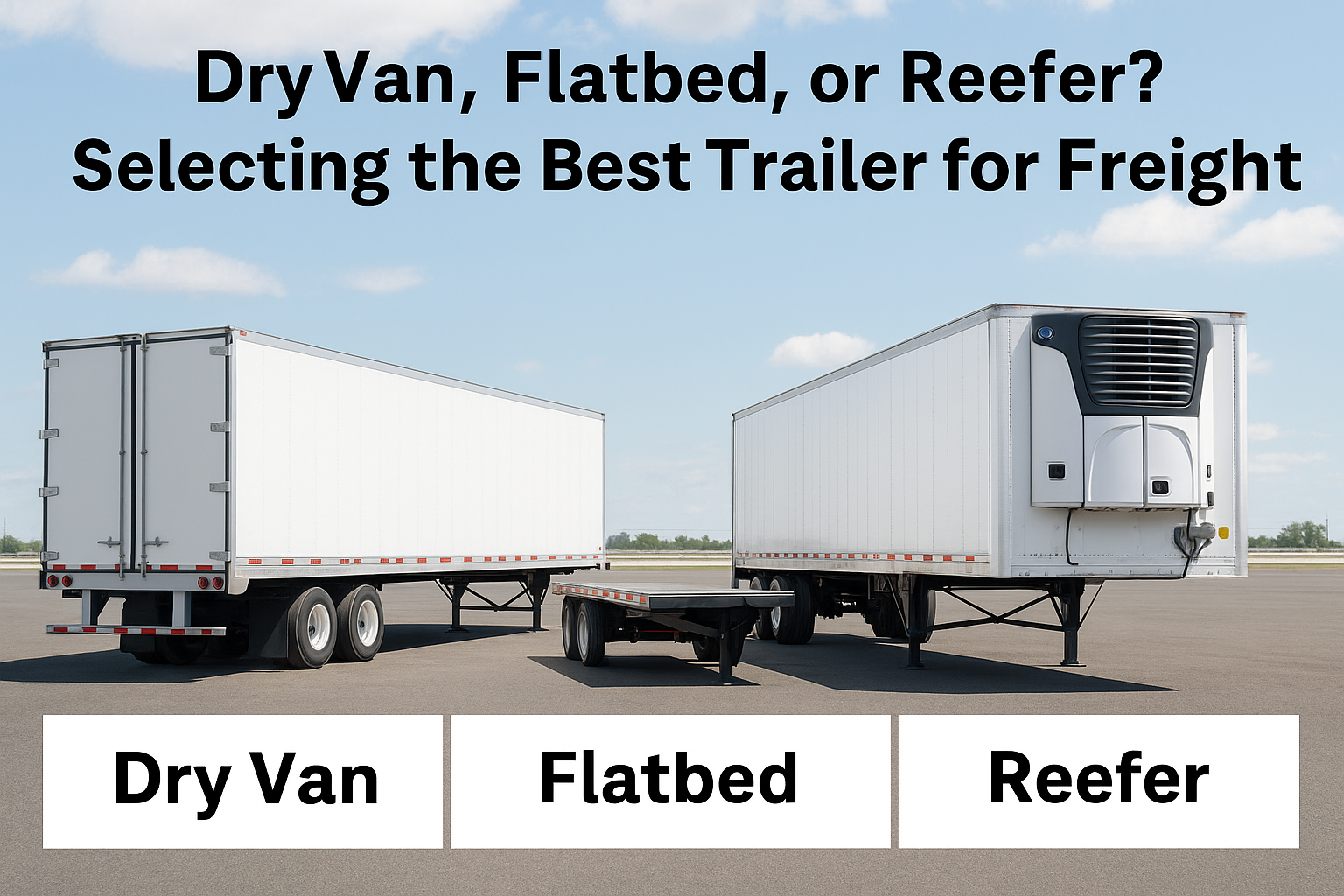Not all trailers are created equal. And choosing the wrong one? That’s like wearing sandals to a construction site.
At The American Truck Inc., we match shipments with the right trailers every single day. The real question isn’t “What are you shipping? it’s “Which trailer is best for it?” This guide explains Dry Van, Flatbed, and Reefer trailers so you can confidently choose the Best Trailer For Your Freight.
Dry Van Trailer: The Workhorse for Everyday Freight
What It Is
A fully enclosed trailer that protects cargo from the weather and road debris. It’s the default choice for most dry goods.
When to Use It
Boxed, palletized, or crated goods
Non-perishable freight
When weather protection is required
Examples
Consumer packaged goods
Electronics
Apparel
Paper products
Limitations
Only accessible from the rear
Not suitable for very tall or wide freight
Flatbed Trailers: For Freight That Doesn’t Play by the Rules
What It Is
An open platform with no walls or ceiling. Great for freight that doesn’t fit in a box—or a box truck.
When to Use It
Freight too wide or tall for enclosed trailers
Loads needing crane or forklift access from the side or top
Construction or industrial materials
Examples
Lumber and steel
Large machinery
Pipes and scaffolding
Limitations
Exposed to weather
Requires extra tie-downs and tarps for safety
Reefer Trailers: Keeping Cool Under Pressure
What It Is
A temperature-controlled trailer designed for perishable or sensitive goods. Think of it as a mobile fridge—or freezer.
When to Use It
Items requiring cold or frozen transport
Products with strict temperature ranges
Sensitive or seasonal items
Examples
Dairy and frozen food
Pharmaceuticals
Floral freight
Limitations
Higher fuel and maintenance costs
Less internal cargo space due to insulation
Choosing the Best Trailer For Your Freight
Trailer Type | Best For | Avoid If… |
|---|---|---|
Dry Van | Dry goods, boxed items | Freight is oversized or needs refrigeration |
Flatbed | Oversized, oddly shaped loads | Load is weather-sensitive |
Reefer | Temperature-sensitive products | You’re hauling non-perishable dry goods |
Real Scenarios – What Shippers Actually Face
: Retail Distribution
You’ve got palletized electronics going from Texas to Illinois. Dry van is your best friend here—secure and weatherproof.
Construction Delivery
You’re moving steel beams, pipes, and scaffolding to a site with no dock access. Flatbed is your only real option.
: Medical Supply Chain
You’re shipping vaccines that must stay at 5°C. Dry van? Not a chance. You need a reefer.
Mistakes to Avoid
Don’t assume a dry van works for everything. It doesn’t.
Don’t skip tarps on a flatbed. Weather damage is real.
Don’t load perishables without a reefer. The spoilage risk is massive.
What Shippers Ask (And How We Answer)
Q: Is a reefer worth it for partial loads?
A: If temperature matters—even for one pallet—yes.
Q: Can I ship building materials in a dry van?
A: Only if they fit. Otherwise, flatbed is safer and faster.
Q: What’s the most cost-effective trailer?
A: Dry van. But cost shouldn’t be your only factor. Match the trailer to the freight.
Still Not Sure? Ask The American Truck Inc.
We handle all trailer types across the U.S. and Canada. Our dispatch team will tell you—honestly—what trailer your freight needs. We won’t upsell you. We’ll just get it there safely.
Learn more or request a quote at The American Truck Inc..
For deeper industry tips and trends, check out this excellent resource from DAT Freight & Analytics.


